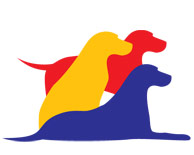You get home from work and your crazed puppy whines, barks and paws at the crate door. When you open the door, puppy blasts out of the crate, jumps up and down on your head, nearly knocks you flat. There must be a better way to greet your dog. Your puppy can be trained to wait for your permission to exit the crate. First, a warning, do NOT ask a young puppy to wait for the crate door when he needs to eliminate. Wait until puppy is a little older, or when he has only been crated for a short time.
Dogs who paw at the crate door, whine, bark and jump around when you approach to release them from their crate are rewarded for these undesirable behaviors when released from the crate. Releasing a barking, whining, pawing, jumping dog from the crate tells the dog that you like these behaviors. Every time you teach your dog self control, you increase his ability to behave well during exciting or distracting events. Waiting quietly at the crate door will begin to teach your puppy self control.
Wait for your puppy to be quiet in his crate, then approach the crate. If your dog begins to vocalize, paw at the crate or jump, stop. Do not make eye contact with the puppy. Wait for your dog to have his feet on the floor and to be quiet. Begin to approach again. As long as your dog is quiet, and has all of his feet on the floor of the crate, you may approach. If he does not have his feet on the floor, or he is vocalizing, stop and wait. Begin to approach again when he is quiet, with all his feet on the floor.
When you reach the crate, if your dog is quiet and all his feet are on the floor of his cage, begin to open the door. If your dog jumps, paws or vocalizes, remove your hand from the door of the crate. Wait until your dog is quiet, with his paws on the floor. Again begin to open the door. If your dog vocalizes, paws, jumps or tries to exit the crate, close the door, take your hand off of the crate. Continue to open the door, shutting the door gently when the dog tries to exit. When you are able to open the door completely and the dog remains in the crate, give your dog his release word. (“Permission” or a release word was taught in last month’s article.) He will probably be reluctant to leave, encourage him with your voice, hands and a treat. Yeah! You did it!
The first time you do this exercise, it will take a little while. After the first successful completion, do this every time you let your puppy out of his crate. Each time your puppy will calm down more quickly. Soon, your puppy will sit calmly waiting for permission to leave his crate. Congratulations! You are one step closer to a well behaved dog.
Tricia Fagan
Certified Professional Dog Trainer – Knowledge Assessed
DogS Gone Good
www.dogSgonegood.com
trainer @ dogSgonegood.com (remove spaces before you send the email)
(713) 557-1949



